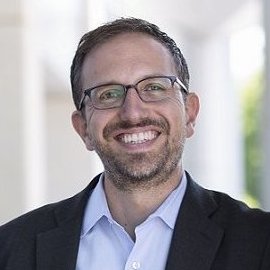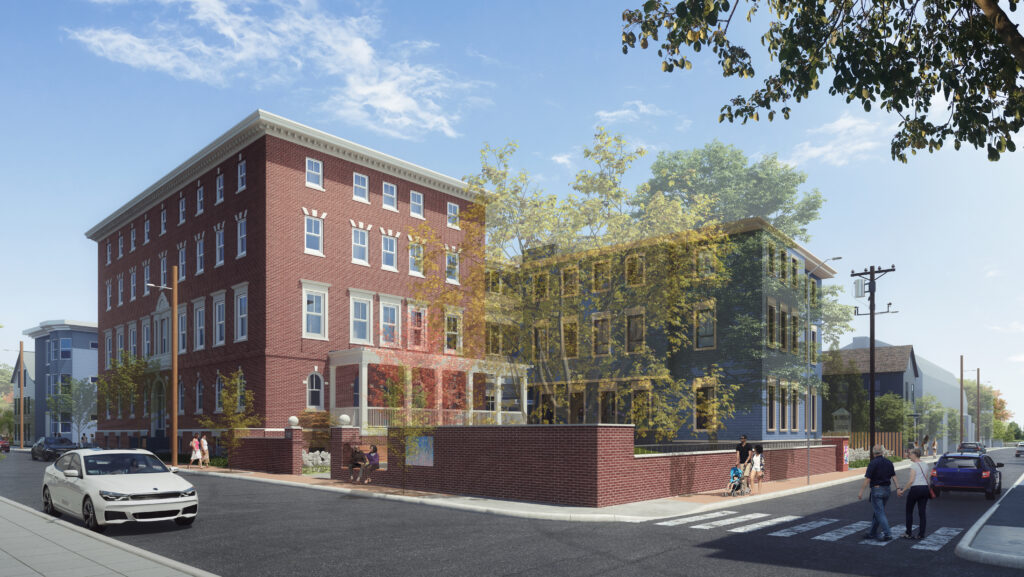Three Years On
Faircloth-to-RAD Helps Secure the Future of Public Housing

By Abram Mamet
10 min read
In 2021, new guidance was issued by the Department of Housing and Urban Development that allowed Public Housing Authorities (PHAs) much-enhanced structure for mixed financing methods to expand their overall supply of units. This guidance, known as ‘Faircloth-to-RAD,’ has the potential to produce up to 235,000 brand-new, deeply affordable public housing units across the country, according to a recent analysis from the University of California Berkeley’s Terner Center for Housing Innovation.
Faircloth-to-RAD comes at a critical time for the country’s PHAs, as many are facing a continuously aging and under-resourced housing stock armed only with extremely limited public funding sources amidst a rapidly increasing cost environment. All the while, funding for these PHAs remains critical, as the agencies continue to provide a substantial share of housing options for their community’s most vulnerable low-income, elderly and disabled residents.
Faircloth-to-RAD is a confluence of two federal regulatory guidelines that shape the way that PHAs operate. The first, a 1998 amendment to public housing law known as the Faircloth Amendment, is a limit on the number of Public Housing units that HUD will assist via Capital and Operating Funds. The cap is not a strict ban on new public housing construction, but rather a limit to the number of units a PHA can include in its Annual Contributions Contract (ACC) with HUD. Thus, according to HUD regulations, a PHA might be able to have units above their Faircloth Limit, though they will only receive funding calculated using their Faircloth Limit, lowering the total amount of money they can spend per unit.
Critically, a PHA’s Faircloth Cap generally remains the same, even if that housing agency takes units offline through various legally allowable means, such as Section 18 (Demolition or Disposition), Section 24 (Choice Neighborhoods and HOPE VI) or other methods. The units taken offline mean that the PHA has several potential future units in their Faircloth ‘bank,’ which they can build and operate given necessary funding.
While Faircloth generally limits the number of housing units a PHA can support, the Rental Assistance Demonstration (RAD) program provides those PHAs with the authority to leverage public and private debt and equity to reinvest and rehabilitate their existing stock. This novel financing structure authorizes PHAs to convert any number of public housing units from their current financial structure (usually Section 9 direct outlay funding) into either Section 8 project-based vouchers (PBVs) or rental assistance (PBRA) contracts. This Section 8 structure utilizes a long-term contract that must be renewed in perpetuity.

RAD “allowed housing authorities to engage more with the broader affordable housing ecosystem,” says Ben Metcalf, managing director of the University of California Berkeley’s Terner Center for Housing Innovation, and who formerly served as deputy assistant secretary for HUD’s Multifamily Housing Programs, helping design and implement the RAD program. “All of a sudden,” Metcalf says, “PHAs realized that the best way to rehab derelict public housing is by going through RAD, which allows them to bring in tax credit equity and a housing developer who will come in and then use that equity or finance against it to get a commercial bank loan.”

Now, HUD’s Faircloth-to-RAD guidance—originally issued in 2021 and revised many times since—brings those two regulations together. “It’s an exciting program because it substantially increases the subsidy that housing authorities receive,” says Tanya Dempsey, co-CEO of CSG Advisors. Though its structure is relatively complicated, Faircloth-to-RAD enables PHAs to use RAD’s financing structures to make units brought back under Faircloth authority more economically feasible with Section 8 project-based contracts.
Faircloth-to-RAD is not necessarily a new federal program, Metcalf explains. Rather, it is updated guidance that “took two existing authorities—RAD on the one hand, Faircloth on the other—and explained how to put them together in a way that is coherent and easier to use.”
Faircloth-to-RAD’s Practical Uses
Faircloth-to-RAD can help PHAs produce new units in a few different ways, such as acquiring new land and building new units, expanding existing properties to increase units served, or partnering with private nonprofit or for-profit developers to fold existing units into the PHAs’ jurisdictional boundaries, increasing the unit’s subsidy and essentially lowering the income band served by those units.
Recently, Dempsey’s CSG Advisors worked with the Dover Housing Authority (DHA) in Delaware to complete the first deal in the country in which Faircloth-to-RAD was on an existing building, as an acquisition rehab deal with four percent Low Income Housing Tax Credits. The deal combined two adjacent properties, both operated by DHA, one of which was a traditional public housing property and the other that was built using the LIHTC program. “The LIHTC building was past its 15-year compliance period and ownership had reverted to the Housing Authority. There was no active investor and no subsidy because it was built solely as LIHTC.” Dempsey explains that CSG and DHA underwent a RAD blend conversion on both buildings to preserve the LIHTC property. Critically, Dempsey says, the deal utilized DHA’s existing Faircloth cap to incorporate about half of the formerly LIHTC-supported units via Faircloth-to-RAD and project base the rest of the building with their inventory, maxing out their Faircloth cap.
Faircloth-to-RAD was key to making sure the deal got done, says Dempsey. “The Housing Authority received a cash acquisition and didn’t need to put any capital into the deal. To us, that’s a big success, because the Housing Authority was able to rehab both buildings without putting in a large contribution.”
Not only does Faircloth-to-RAD allow PHAs to gain access to valuable financial tools, but it also integrates the deep expertise and community stewardship of these decades-old institutions back into the broader affordable housing development ecosystem. Now, says Metcalf, private developers can arm themselves “with the resources that the housing authorities are going to bring to the table, above and beyond just vouchers, which historically was all the housing authorities otherwise would have had.”
One major hinge point for Faircloth-to-RAD’s success, says Metcalf, is PHAs’ abilities to set contract rent levels. Though by law tenants never have to pay more than 30 percent of their income, initially, PHAs were supposed to use a set formula to determine contract rent rates that often resulted in extremely low rent rates and thus diminished rental assistance subsidy. However, after revised guidance was issued last September, HUD granted some flexibility in how housing authorities set their rents, allowing them to push those rents slightly higher by augmenting with already on-hand voucher funds under defined circumstances. “That was a big game changer,” says Metcalf, “because all of a sudden, it was high enough to really work from an underwriting perspective relative to tax credit rents.” This small but significant change has caused Faircloth-to-RAD to accelerate and “really gain traction across the country,” Metcalf says.
Unfortunately, this impactful change may be short-lived, as that flexible rent-setting guidance is set to sunset on September 30 of this year. “That will have negative effects for the field, and it’s something that people should be aware of,” Metcalf says.
The full impact of Faircloth-to-RAD has yet to be seen and Metcalf points to a forthcoming study commissioned by HUD and facilitated by 2M Research and the Terner Center. However, if maintained with care, Faircloth-to-RAD has the potential to be a “win-win-win” says Metcalf. “The PHA doesn’t have to put a single capital dollar in to get a public housing unit on the back end. And then the nonprofit or for-profit tax credit developer can get a contract rent level that is otherwise higher than whatever they might be able to do. Even in contexts where tenants can’t pay—like formerly homeless housing—they still get a contract grant from HUD. It’s elegant in that way.”

Lessons From the Cambridge Housing Authority
In 2013, the Cambridge Housing Authority (CHA) was faced with an aging housing stock with extensive capital needs. “We had something from almost every generation,” says Margaret Donnelly Moran, CHA’s deputy executive director of development, “and were desperate to figure out a way to move forward with the reinvestment in our portfolio as a method to protect and preserve it.” By the agency’s own estimation in 2008, Donnelly Moran says, they would need 32 years to complete all the capital needs that needed funding based on the allocation they were getting at the time, which was about $7 million a year in combined funding from local, state and federal sources.
CHA’s answer came in the then-fledgling RAD guidance, which allowed the agency to undergo previously unimaginable revitalization of its public housing portfolio. Initially, CHA approached its RAD conversion in waves, first undertaking $180 in renovations and redevelopment across five sites. Then, CHA applied for a number of Section 18 demolition/disposition processes, freeing up significant Faircloth authority.
Luckily, soon after those Faircloth units opened up, HUD issued its new Faircloth-to-RAD guidance, allowing Cambridge to explore new funding options for replacing the Section 18 units. “That was a game changer for us in terms of being able to create new deeply affordable units in a very high-cost market where we haven’t been able to create new deeply affordable public housing units since the 90s,” Donnelly Moran says.
CHA has now converted 98 percent of its portfolio, unlocking hundreds of millions of dollars in previously unavailable capital to undergo significant rehabilitation. Further, they have freed up over 1,500 Faircloth units, says Donnelly Moran, allowing the agency unprecedented flexibility to pursue additional low-income housing options for their community. “That is profound and a real opportunity to address an overwhelming need for deeply affordable housing units.”

The agency has already begun to make inroads into its Faircloth cap using Faircloth-to-RAD. One recent project is 116 Norfolk, a site within walking distance to rapid transit and a commercial area, which CHA initially converted using a blended RAD/Section 18 process. During that process, the agency identified an underutilized parking lot on the site and used Faircloth-to-RAD to add a new addition that will be connected to the existing building to add 25 units. “Faircloth-to-RAD has been pivotal because it’s provided the basis of the subsidy stream for the 25 new units,” says Clara Fraden, CHA’s planning director.

Rendering by HMFH Architects

There have been a few small but significant challenges during this transition, says Mike Johnston, CHA’s executive director. First, new regulations from the RAD conversion meant that residents had to go through more frequent recertifications than they had before. “But I think our Planning and Development department and our operations staff did a really good job paving the way and explaining to folks” the reasons why they made the switch, Johnston says.
Further, he says staff have been proactive in responding to challenges when they do come up. “Staff have had to have some change of mindset. Now, you’ve got to think of everything as an asset. You’re dealing with investors; you’re dealing with strict tax credit rules.” For example, they used public housing software that didn’t fit their new model after the RAD conversion. Staff took cues from the private housing model, and implemented changes that allow them to “run reports and look at the financial health of the properties in a way we’ve never been able to do before.”
